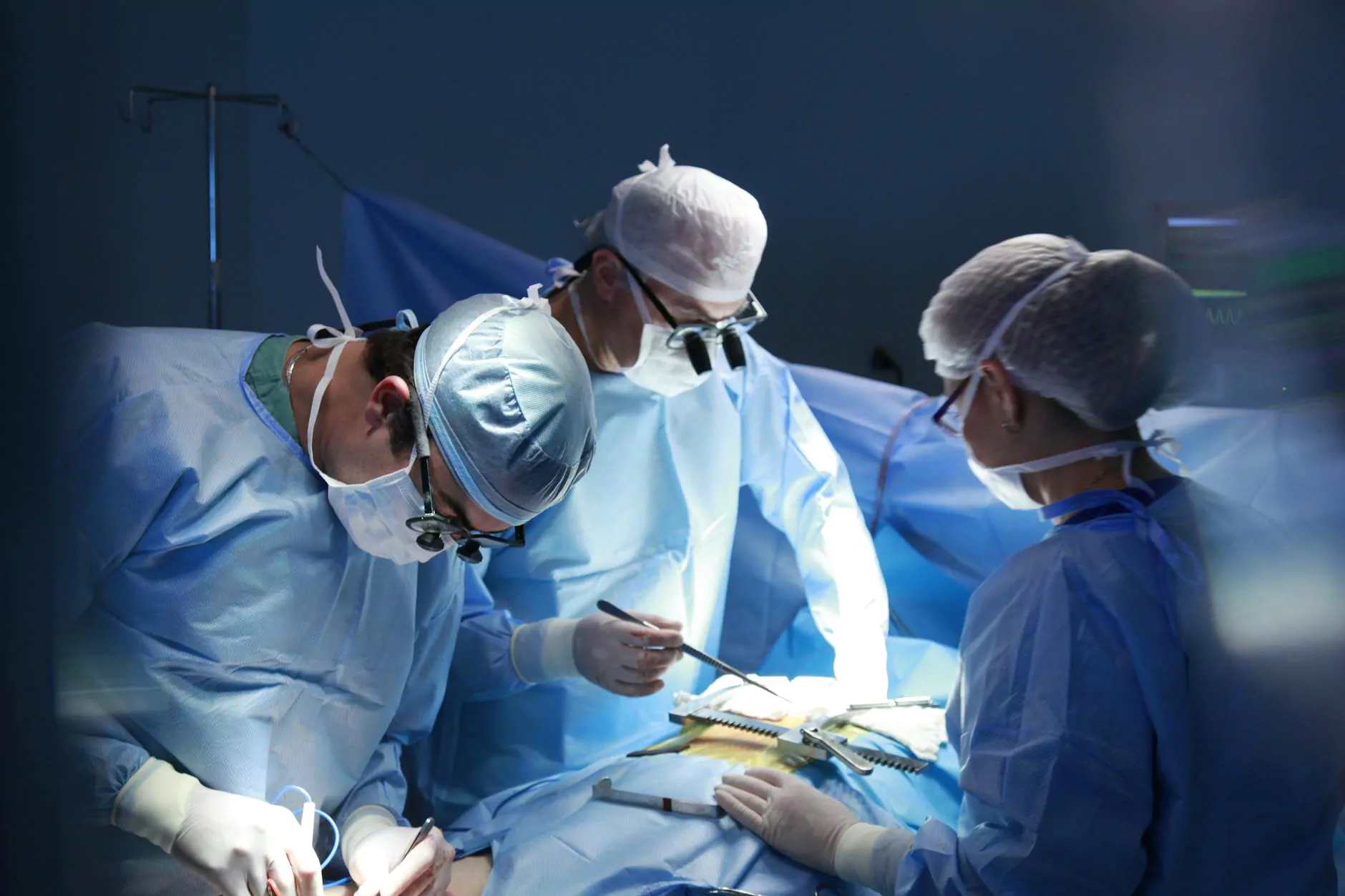The Comprehensive Guide to Abdominal Hysterectomy and Bilateral Salpingo Oophorectomy

Abdominal hysterectomy and bilateral salpingo oophorectomy are significant surgical procedures primarily performed for women's health issues. These operations are crucial in treating various conditions and improving the overall quality of life for many women. This guide provides an in-depth look into these procedures, their indications, multidisciplinary approaches, and recovery processes, aiming to inform patients about what to expect during their treatment journey.
What is an Abdominal Hysterectomy?
An abdominal hysterectomy is a surgical procedure in which the uterus is removed through an incision in the abdomen. This surgery may be necessary due to various medical conditions, including:
- Fibroids: Noncancerous growths in the uterus.
- Adenomyosis: A condition where the inner lining of the uterus breaks through the muscle wall.
- Endometriosis: A condition in which tissue similar to the lining inside the uterus grows outside it.
- Uterine Prolapse: When the uterus slips out of its normal position.
- Cancer: Such as uterine, cervical, or ovarian cancer.
Bilateral Salpingo Oophorectomy Explained
A bilateral salpingo oophorectomy involves the surgical removal of both ovaries and fallopian tubes. This procedure might be performed in conjunction with an abdominal hysterectomy or as a standalone surgery if there are concerns related to:
- Ovarian Cysts: Fluid-filled sacs on the ovaries that can cause pain and discomfort.
- Ovarian Cancer: Cancer that originates in the ovaries.
- Genetic Risk Factors: Women with BRCA1 or BRCA2 mutations may choose this preventive surgery.
Indications for Surgery
The decision to undergo an abdominal hysterectomy and bilateral salpingo oophorectomy is made based on a thorough evaluation by a healthcare provider, who will consider the patient's medical history, symptoms, and overall health. Common indications include:
- Severe Pelvic Pain: Often associated with conditions like endometriosis.
- Heavy Menstrual Bleeding: Also known as menorrhagia, may require surgical intervention.
- Malignancies: Any indication of gynecological cancer will necessitate these surgeries.
- Chronic Infections: Persistent infections may lead to the need for surgery.
Preoperative Considerations
Before undergoing an abdominal hysterectomy and bilateral salpingo oophorectomy, several preoperative assessments are typically conducted, including:
- Comprehensive Medical History: Understanding the patient's medical and surgical history.
- Physical Examination: A thorough exam to assess overall health.
- Imaging Studies: Ultrasounds or CT scans may be performed for clearer anatomical insights.
- Blood Tests: To check for anemia, infection, and overall organ function.
The Surgical Procedure
The surgery generally involves the following steps:
- Anesthesia: The patient receives general anesthesia for comfort during the procedure.
- Incision: A horizontal or vertical incision is made in the abdominal wall.
- Uterine Removal: The uterus is carefully detached from the surrounding structures.
- Ovarian and Tubal Removal: The ovaries and fallopian tubes are assessed and removed if necessary.
- Closure: The incisions are closed using sutures or staples.
Recovery Process
Recovery times can vary, but the typical hospital stay after these surgeries is around 1 to 3 days. During the first few weeks, patients may experience:
- Abdominal Pain: This is common and generally manageable with prescribed medications.
- Fatigue: As the body heals, fatigue is expected.
- Dietary Changes: Gentle diets are usually advised initially.
Full recovery can take between 6 to 8 weeks, during which patients are encouraged to attend follow-up appointments for progress assessments and to manage any complications.
Potential Risks and Complications
Like any major surgery, an abdominal hysterectomy and bilateral salpingo oophorectomy carry potential risks, including:
- Infection: Surgical site infections can occur.
- Bleeding: Excessive bleeding may require additional intervention.
- Organ Damage: Surrounding structures may be inadvertently harmed.
- Blood Clots: Increased risks postpartum necessitate monitoring.
The Importance of Following Medical Advice
After the procedure, adhering to medical advice is crucial for a successful recovery:
- Attend Follow-up Appointments: Regular check-ups help in monitoring recovery.
- Medication Management: Follow prescribed pain management and antibiotic regimens.
- Gradual Activity Increase: Engage in light activities as tolerated, gradually increasing intensity.
- Healthy Diet: Focus on nutrition to boost healing.
Living Post-Surgery
Post-surgery, many women experience relief from their previous symptoms and are able to regain a better quality of life. However, understanding changes, including menopause symptoms or hormonal changes (if the ovaries are removed), is essential.
It is advisable to discuss the potential need for hormone replacement therapy or other treatments with your healthcare provider during this transition.
Conclusion
In conclusion, the abdominal hysterectomy and bilateral salpingo oophorectomy are vital surgical procedures that can alleviate pain and improve life quality for women with various gynecological issues. Advocating for one's health through understanding the procedure, preparing for surgery, and committing to recovery is critical. For personalized care and expert advice, consider reaching out to experienced healthcare providers such as those at drseckin.com.
For further information and support regarding these procedures, women are encouraged to consult with healthcare professionals who specialize in gynecology. Your health is a priority, and informed decisions can lead to better outcomes. Embrace your journey toward wellness!









